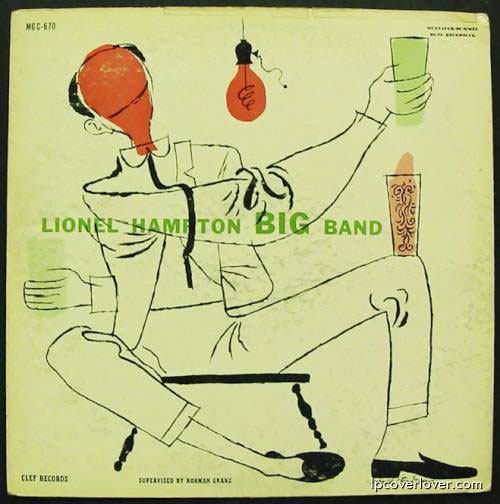Justi’s for all
Latin drummer Justi Barretto and his Orchestra “Boogaloo Shingaling” on Starbright.
Bobby Montez “Jungle Fantastique!” on Jubilee (1958) The first and best of just five Latin jazz lps by West Coast vibist Montez. “African Fantasy,” “Jungle Sunset” and “Kon Tiki” are legendary jazz dance tracks.
Ronnie Hawkins Roulette Records (1959) With the Hawks (aka The Band). Featuring “Forty Days” (a re-working of Chuck Berry’s “30 Days”) and “Mary Lou” among others!
“I’m Going To Tell You A Story About Mary Lou
I Mean The Kind Of A Woman Who Makes A Fool Of You
She Makes A Young Man Groan And An Old Man Pain
The Way She Took My Money Was A Crying Shame
(Mary Lou, Mary Lou) She Took My Diamond Ring
(Mary Lou, Mary Lou) She Took My Watch And Chain
(Mary Lou) She Took The Keys To My Cadillac Car
Jumped In My Kitty And She Drove A-Far”
The GREAT Little Milton! “We’re Gonna Make It” Checker Records (1965)
“We may not have a cent to pay the rent
But we’re gonna make it, I know we will
We may have to eat beans every day
But we’re gonna make it, I know we will
And if a job is hard to find
And we have to stand in the welfare line
I’ve got your love and you know you got mine
So we’re gonna make it, I know we will”
“Blues & Ballads” Lonnie Johnson with Elmer Snowden Prestige/Bluesville (1960)
This beautiful album was engineered by Rudy Van Gelder in his Englewood Cliffs, New Jersey, home studio where so much jazz history was made. It features guitar innovators Lonnie Johnson and Elmer Snowden together for the first time–despite a friendship going back to the 1920s when both appeared on some of the earliest jazz and blues 78s. Johnson, the father of single-note six-string soloing, is in marvelous voice on this selection of blues, ballads, and jazz, crooning the double-entendre “Jelly Roll Baker” and the heartache-laden “Back Water Blues” (a Bessie Smith tune he first cut in 1927) with a marksman’s sense of pitch and chilling nuance. Snowden serves mostly as accompanist. But these men play so closely that they seem to be sharing every breath. –Ted Drozdowski

Lionel Hampton BIG Band. David Stone Martin illustration. Clef Records. Produced by Norman Granz.
The Band’s debut album. “Music From Big Pink. Read Al Koopers review from Rolling Stone in 1968 here. Bob Dylan’s naive art graces the cover and indicates the unpretentious and back-to-roots approach of the music within. A watershed release and a kind of response to the studio wizardry of “Sgt. Pepper” the year before. Big Pink landed at the height of psychedelia and brought an earthiness to the scene; changing the course of music and influencing many including Eric Clapton (who cites it as his reason for leaving Cream).
Ska Mania “The Sound of the Soil” Carlos Malcolm and his Afro-Jamaican Rhythms. (1965) Upbeat Records.
Ska bandleader Carlos Malcolm was an underappreciated figure of the music’s early days, and also made some recordings in New York in a more Americanized vein. A native of Kingston, Malcolm received formal musical training and broke into the business playing trombone with the legendary Don Drummond in a jazz group in the late ’50s. In 1962, he was tapped to head the ten-piece house orchestra of the newly established state radio organization the Jamaican Broadcasting Corporation, and wrote some of the first formal ska arrangements as a result. He also composed uncredited music for the soundtrack of the first James Bond film, Dr. No (which was partly filmed in Jamaica), and formed his own group, the Afro-Jamaican Rhythms, whose music melded ska, African, Latin, and jazz rhythms. They scored hits in Jamaica with “Rukumbine” (1963) and, especially, “Bonanza Ska” (1964, a reworking of TV’s “Bonanza” theme song); they also recorded three albums, the most prominent of which was Ska Mania. During the ’60s, Malcolm also traveled to New York and recorded three albums that blended a Caribbean sensibility with American musics. The Roulette release Don’t Walk, Dance! (around 1964) was the first of these, boasting a jazzy, Latin-flavored sound; it was followed in 1966 by Sounds of the Caribbean (Scepter), credited to Carlos Malcolm & the Jamaica Brass. Perhaps the most prized item in Malcolm’s catalog, Bustin’ Outta the Ghetto (released on AJP in the late ’60s) was a collection of full-fledged funk instrumentals that touched only tangentially on Jamaican music. Malcolm eventually settled in San Diego. ~ Steve Huey, All Music Guide
The Big Bopper (J.P. Richardson) “Chantilly Lace” Mercury Records (1958)
With the success of “Chantilly Lace,” Richardson joined Buddy Holly and The Crickets, Richie Valens and Dion & The Belmonts for a “Winter Dance Party” tour. On February 2, 1959, Buddy Holly chartered a small plane to take him and his new Crickets band (Tommy Allsup and Waylon Jennings) to Fargo, North Dakota. Richardson came down with the flu and didn’t feel comfortable on the bus, so Jennings gave his plane seat to Richardson. Valens had never flown on a small plane and requested Allsup’s seat. They flipped a coin, and Valens won the toss.
In the early morning of February 3, 1959, in Clear Lake, Iowa, the small four-passenger Beechcraft Bonanza took off from the Mason City airport during a blinding snow storm and crashed into Albert Juhl’s corn field several miles after takeoff at 1:05 a.m. Richardson was in the seat that Waylon Jennings was supposed to have occupied. The crash killed Holly, Valens, Richardson and the 21-year-old pilot, Roger Peterson. In his 1971 hit song “American Pie” Don McLean referred to this event as “The Day the Music Died”.